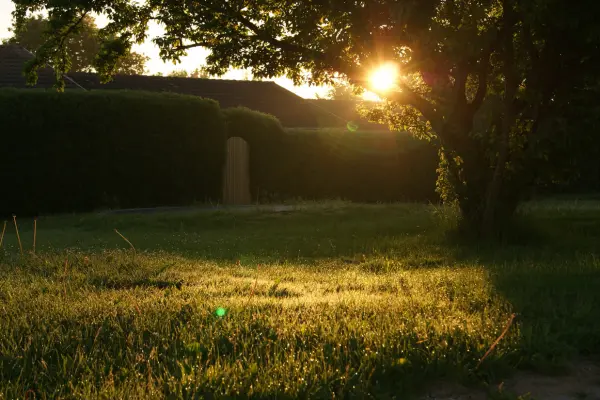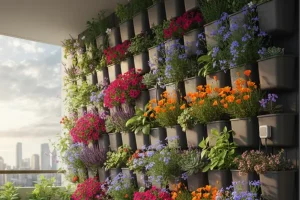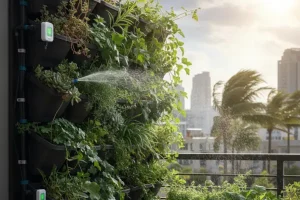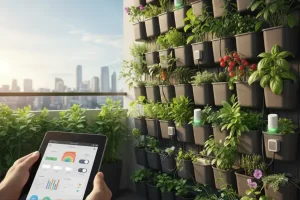Many vertical gardeners start small—maybe with a single tower on a balcony or a few hanging planters in a sunny window. But what happens when you want more? Scaling your system from a compact balcony setup to a full backyard farm is not only possible but surprisingly practical with the right planning.
In this article, we’ll explore how to expand your vertical farming system step by step, so you can enjoy bigger harvests without losing the efficiency that vertical gardens are known for.
Why Scaling Matters
Starting small is smart—it allows you to learn without investing too much. But as your confidence grows, you may want:
- A greater variety of crops
- Larger harvests for family or community use
- More efficient systems that reduce manual labor
- The satisfaction of a full-scale backyard setup
Scaling up lets you take vertical gardening from hobby to lifestyle—or even a small business.
Step 1: Evaluate Your Current Setup
Before scaling, assess what works and what doesn’t.
Ask yourself:
- Which crops are thriving?
- Do I struggle with watering, light, or nutrients?
- Is my system soil-based, hydroponic, or aquaponic?
This helps determine what type of larger system you should build in the backyard.
Step 2: Plan for Space and Sunlight
Your balcony garden may have relied on one good sunny corner, but in a backyard, sunlight patterns change.
- Backyard orientation: South-facing spots usually receive the most consistent sunlight.
- Shaded areas: Consider shade-tolerant crops (like spinach or herbs) or add supplemental grow lights in covered areas.
- Wind protection: Tall vertical towers may need windbreaks outdoors.
Step 3: Upgrade Your Structure
Balcony towers are usually lightweight, compact, and portable. Backyard systems can be sturdier and taller, holding more plants.
Options for backyard scaling:
- Multiple vertical towers: Great for high-density planting of greens and herbs.
- Wall-mounted living walls: Perfect for fencing or unused walls.
- A-frame or ladder-style planters: Easy to build and harvest from.
- Greenhouse integration: Extend the growing season with controlled environments.
Step 4: Improve Watering and Nutrient Delivery
Manual watering might work on a balcony but is inefficient in a backyard. This is where automation becomes valuable.
- Install larger reservoirs to reduce refills.
- Use drip irrigation or pump-based systems for even water distribution.
- Add timers or smart controllers to regulate watering and nutrient delivery automatically.
Step 5: Expand Crop Variety
A bigger system means more options.
- Balcony-friendly crops: Lettuce, basil, mint, small peppers, strawberries.
- Backyard crops: Tomatoes, cucumbers, beans, peas, kale, dwarf fruit varieties.
- Seasonal rotations: Leafy greens in cool months, fruiting crops in summer.
Step 6: Budget and Maintenance Planning
Scaling up doesn’t need to break the bank, but planning ahead saves headaches.
Estimated costs for scaling:
| Scale Level | Approx. Cost | Suitable Crops | Notes |
| Small balcony setup | $50–$150 | Lettuce, basil, mint | Great for beginners |
| Medium backyard setup | $200–$500 | Strawberries, peppers, kale | Includes basic automation |
| Large backyard system | $600–$1,500 | Tomatoes, cucumbers, beans | Often includes multiple towers or greenhouse integration |
Maintenance tasks to plan for:
- Weekly cleaning of pumps and filters
- Seasonal flushing of nutrient reservoirs
- Crop rotation to prevent nutrient depletion
Common Mistakes When Scaling Up
- Expanding Too Quickly
Scaling faster than you can manage leads to frustration. Expand one step at a time. - Ignoring Water Supply Needs
Larger systems need bigger reservoirs or direct water connections. Don’t rely on manual watering. - Choosing the Wrong Crops
Some large crops are not suited for vertical systems. Stick to varieties bred for container or vertical growth. - Underestimating Maintenance
More plants mean more monitoring. Automation helps but doesn’t eliminate the need for regular checks.
FAQs
Q: Can I combine balcony and backyard systems?
Yes. Keep herbs and quick-harvest crops on the balcony for easy access, while dedicating the backyard to larger crops.
Q: How much space do I need for a backyard vertical farm?
Even 50–100 square feet can support several vertical towers and produce a steady supply of greens and vegetables.
Q: Do I need a greenhouse to scale up?
Not required, but a greenhouse helps extend growing seasons and protect crops from weather extremes.
Q: Can I sell produce from a backyard vertical farm?
Yes, many urban farmers do. Check local regulations before starting.
Next Steps & Related Reading
If you’re considering automation as you scale, see Upgrading to a Smart Vertical Garden: Sensors & App Integration for advice on managing larger systems efficiently.
For decorative options, try How to Create a Living Wall of Seasonal Blooms, which adds beauty alongside productivity.
Conclusion
Scaling your vertical garden from balcony to backyard is a natural progression as your skills and ambitions grow. By planning carefully—evaluating space, upgrading structures, automating watering, and expanding crop variety—you can create a system that produces abundant, healthy harvests while still saving space.
The key is to start small, learn as you go, and expand steadily. With the right approach, your backyard can become a thriving vertical farm that meets your needs year-round.
If you’ve already started with a balcony garden, what’s the first crop you’d add when scaling to a backyard system?




